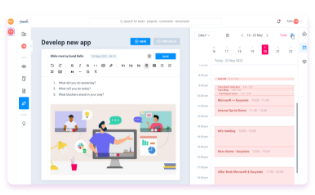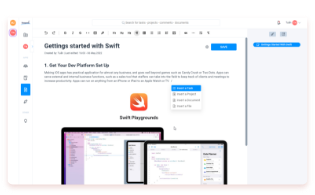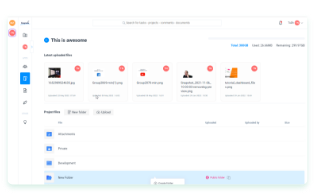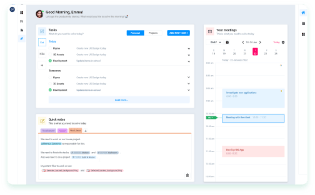A project list is an essential part of every project. Effective project management requires careful planning, organization, and paying attention to vital details. A comprehensive project list is one of the essential tools for successful projects.
If you are doing a complex project it can be challenging to estimate everything. So many big tasks can be confusing and messy. But by breaking them into smaller, manageable tasks you get a more clear picture of what you need to do.
So, let’s see how to create and manage your project list successfully.
Why Is Project List So Important for Managing Projects?
A project list is a list of vital elements of your project. It’s a to-do list that outlines all the tasks, deadlines, phases, crucial information, and responsibilities involved in completing a project. Whether you are managing a large-scale project or a smaller one, a project list can help you stay on track. It helps you stay organized, prioritize your tasks and meet your deadlines.
Having a project list provides organized tracking of all the tasks and activities related to a project. Here is why a project list is the heart of the project:
- Organization – A project list helps organize and prioritize tasks, ensuring that everything is accounted for and nothing is missed.
- Visibility – All team members can see project progress, tasks assigned to them, and deadlines. This enables better communication and cooperation between team members.
- Time Management – By having a list of projects, you can better manage your time and resources, ensuring efficient and effective allocation of resources.
- Accountability – It helps keep team members accountable for their tasks and deadlines, as everyone can see who is responsible for what.
- Goal Tracking – The project list allows you to track progress against project goals and milestones, ensuring that the project stays on track and is completed on time.
- Reducing Risk – Knowing and planning each step helps to foresee, prevent or quickly solve risks.

How to Create Your Project List?
Before you start creating a list of projects, it is important to plan the list thoroughly. This includes setting clear goals for your project list, breaking down larger projects into smaller tasks, and prioritizing tasks based on their importance and urgency.
The first step is understanding and defining the idea and project scope. After that, your project deserves a format that best suits its specifics. Once you’ve done all these steps, be ready to manage project lists and make the necessary changes.
For more details, see how to do all 3 steps, then read the tips that will lead you to a successful project.
Define Project Scope
To successfully create a project and project list, you must first understand and define the project scope. Understanding the scope is the first step toward the successful implementation of the complete project. A useful definition of the project scope is possible through several steps:
First, determine the needs of the project.
Second, determine the goals of the project. You need to define the purpose and desired outcome of the project. Identifying specific goals will help you establish the project’s scope by focusing on the results.
Then, consider project limitations. It’s also necessary to identify any limits or constraints that may impact your project. So, keep in mind what can go wrong, including resource constraints, time constraints, and any legal requirements. You can do a SWOT analysis that includes strengths, weaknesses, opportunities, and threats of your project.
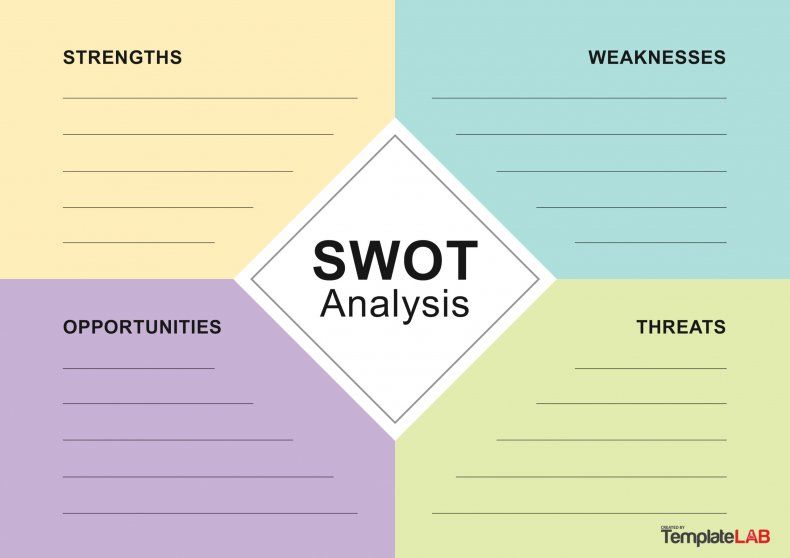
Summarize the scope of the project in a scope statement that outlines the project’s goals, objectives, deliverables, constraints, and assumptions. The scope statement should be clear, concise, and easily understood by all stakeholders.
And finally, define the budget: How much budget is needed to successfully conclude your project? Keep in mind planned and unplanned expenses and define a budget for your goals.
Choose a Format or Project List Template That Suit You
When choosing a project list template consider the purpose of the project. The project template should align with project goals, detail, and needs.
You also need to know your team member’s needs and preferences. If you’re into a specific format or tool in your time, it might be best to stick to that to maintain consistency.
Choosing software with customizable templates is the best way to achieve your goals. Easynote software has features that help you create your project list templates as you see fit.
In Easynote, you can customize templates to specific project needs. You can add or remove fields, adjust the timeline, and change the layout to match your preferences.
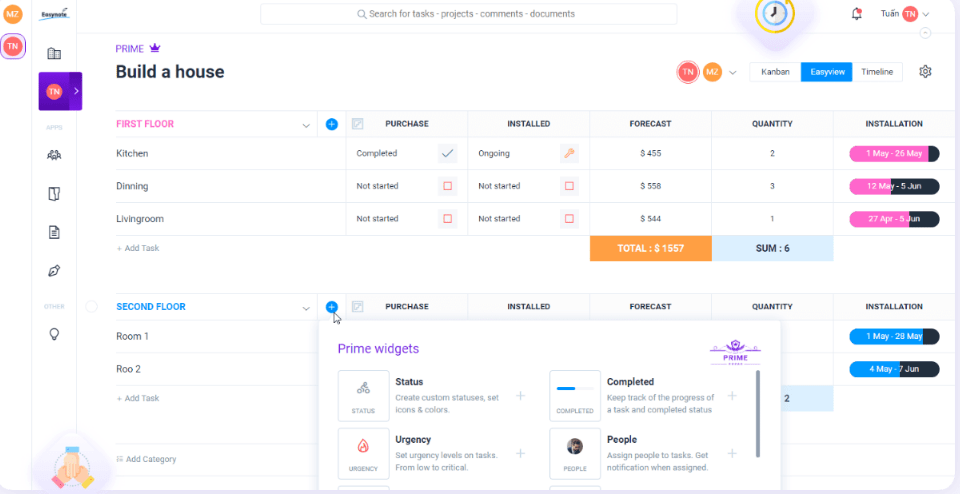
Manage Your Project List
Managing your project backlog involves regularly monitoring your progress, making adjustments as needed, and communicating effectively with your team members and stakeholders.
So, monitor your progress regularly and make adjustments as needed to make sure you stay on track. That may include reprioritizing tasks, assigning new tasks to team members, or adjusting deadlines.
Tips and Strategies for Successful Project List
To be sure that you have made a good project list and everything you need for successful project planning, it’s necessary to keep in mind a few simple tricks.
These strategies will help you every time you create a project and be more productive. So, let’s see what you can do.
Break Down Tasks Into Smaller Steps
Do you know how to eat a whole elephant? Bite by bite.
Big projects sometimes seem like a big elephant in front of us. It seems impossible to achieve it. Is it?
As long as we don’t divide the project into smaller tasks, the project will be giant and scary. But when our big tasks break down into smaller steps, our project takes on a new look. It no longer seems impossible to carry it out.
That’s one of the basic rules when creating a project list. Use the project template in Easynote to set goals, divide large tasks into smaller ones, set deadlines, and assign them to team members.
Use Labeling to Organize Your List
Labeling to organize your project list can be a powerful tool for staying on top of your tasks. That way you can ensure you are focusing on the most significant work and save your time and energy.
How to do that?
Firstly, determine categories due to priorities. For example, you might have labels such as “Urgent”, “Low priority”, “Personal”, etc.
Then, choose a labeling system that works for you. You can use colored dots, highlighters, or systems like Easynote, Trello, Asana, or Monday.com.
Add labels to your tasks and filter them. That way you can sort your tasks and see which tasks fall into each category.
And finally, update labels as needed. Be flexible until you find the system that works for you and your team.
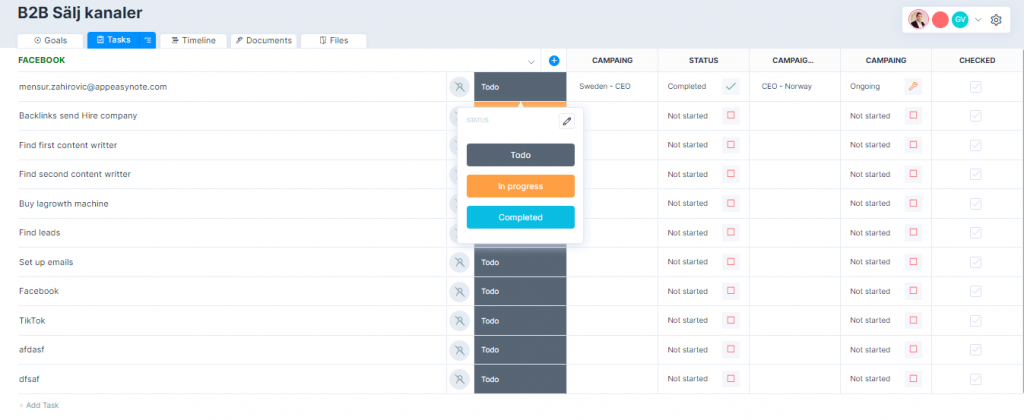
Assign Tasks to Team Members Based on Their Strengths
Assigning tasks based on team members’ strengths is the only way to ensure each member achieves the maximum. It’s not always easy to do this step. You need to know your workers and team members well. However, try to consider some of the following things:
- Identify the Strengths of Each Team Member: Start by identifying the strengths of each team member. You can do this by having team members complete a self-assessment or asking for feedback from colleagues or managers.
- Match Tasks to Each Individual’s Strengths:: After identifying each team member’s strengths, match tasks to those strengths. For example, if you have a team member who is excellent at data analysis, you can assign them to work on a project that involves analyzing large amounts of data.
- Consider Workload and Development Opportunities: When assigning tasks, it’s essential to consider each team member’s workload and any development opportunities they may need. You don’t want to overload one team member with too many tasks, and you also want to ensure that every team member has the opportunity to learn and grow.
- Communicate With Your People: When assigning tasks based on strengths, you must communicate with team members why you are giving them a particular assignment. Let them know that you recognize their strengths.
- Monitor Progress and Provide Feedback: As team members work on assigned tasks, monitor their progress and provide feedback as needed. It can help ensure they are on track.
Use Project List Template
You can find a project list template quickly and easily, given that there are many options available. Most of these options allow you to create a project list template as you see fit and adapt it to your project.
Here are some ideas on where to find templates:
- Many project management software offers built-in project list templates you can use to get started quickly. One of the best PM software that offers customizable templates for your projects and tasks is Easynote. Some popular ones are Monday.com, Asana, Trello, and others.
- Microsoft Office also offers a wide range of project list templates for various software applications such as Excel, Word, and PowerPoint. You can access these templates by opening the app and searching for “project list” in the template search bar.
- Many websites offer online free project list templates that you can download and use. Some popular options include Template.net, Smartsheet, and Vertex42. These websites provide templates you can choose from based on your needs.
- You can create your own project list template if you cannot find one that meets your needs. You can do this by starting with a blank document or spreadsheet and adding the necessary columns and data.
Use Easynote to Keep Track of Everything
To have all tasks, goals, deadlines, and documents in one place and share them with team members, import them in Easynote.
Easynote is software that can help you organize and manage your project list. Here are some steps on how to use Easynote to create a project list:
- Create a new project: Log in to your Easynote account and click the “Create Project” button. Give your project a name and add a short description.
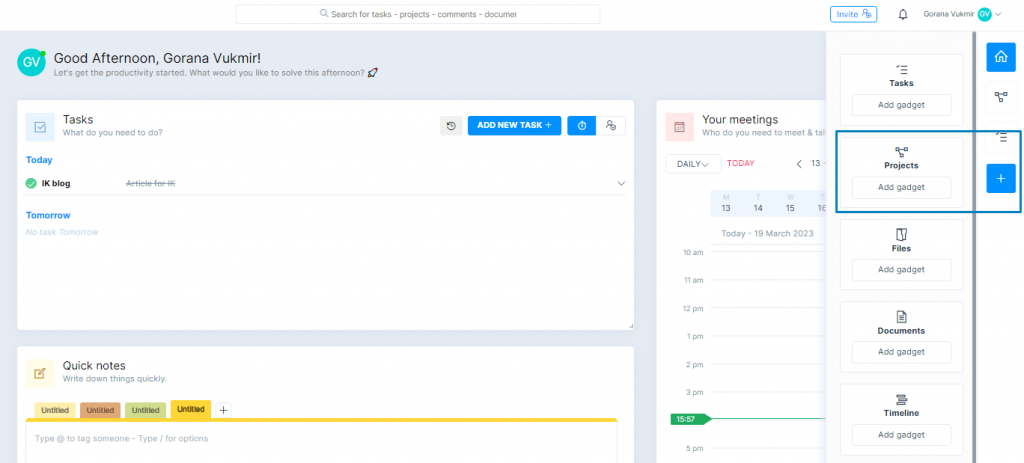
- Add tasks: Once you’ve created your project, start adding tasks. Give each task a name, assign it to a team member, and set a deadline for completion.
- Add subtasks: If your tasks have multiple steps, you can divide them into subtasks. Subtasks will help you track progress easily and ensure nothing is overlooked.
- Set priorities: Prioritize each task to make sure you focus on what is most important. With Easynote, you can identify which tasks require immediate attention by assigning a priority level.
- Track progress: As you work on your project, you can update the status of each task to reflect progress. You can mark tasks as “In Progress“, “Completed” or “Pending” to give you a better idea of where you are.
- Review and Update: Review your project list in Easynote to ensure you’re on track and completing progress toward your goals. Update the status of each task as needed to reflect any changes or new information.
What We Can Conclude: Easynote Has Everything You Need
A good project implementation begins with a project list. This step involves defining the project scope, dividing it into smaller tasks and steps, and assigning each member a task.
Tools like Easynote and other software offer you to create your own project list templates that suit your needs. In Easynote, you can easily define tasks, set deadlines, set priorities in different colors, and assign them to team members. You can track your progress and have a fantastic visual overview of the situation at every moment.
So follow Easynote features and transfer all your projects there. Why not have everything in one place?


